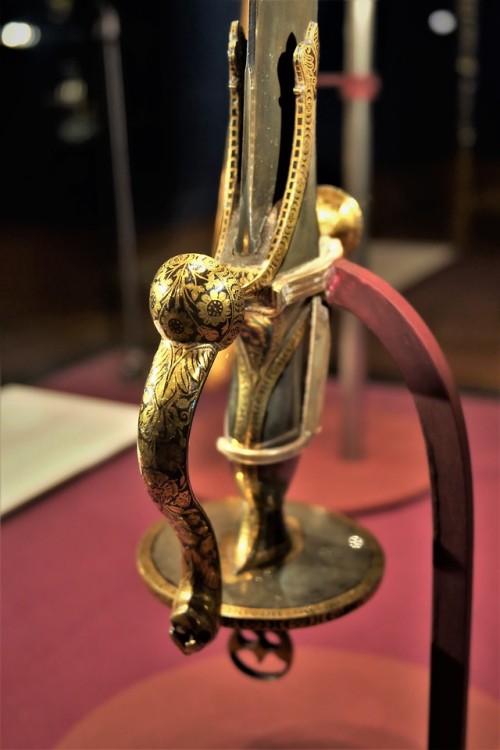barbucomedie: Talwar from India dated to the Late 18th Century on display at the Queen’s Galle
barbucomedie: Talwar from India dated to the Late 18th Century on display at the Queen’s Gallery in EdinburghThis talwar forged entirely of watered crucible steel giving the blade a very fine dark watered pattern and it is inlaid with gold with a dedication in Persian to the Prince of Wales (Edward VII) from Maharaja Mangal Singh of Alwar and the name of the bladesmith, Muhammad Ibrahim. The hilt forged with a knuckleguard in the form of a lion’s head is blued and overlaid with gold inscriptions in Persian and poppies and butterflies. The inscriptions on the hilt refer to a previous Maharaja of Alwar, Bakhtawar Singh (1779-1815) and to ’Zulfiqar’, the legendary sword that the Prophet Muhammed presented to his son-in-law, Ali ibn Ali Talib. The inscriptions suggest that the hilt predates the blade.This sword is an exceptional example of watered crucible steel made by melting iron with carbon-rich vegetable material, such as leaves, in a crucible for a prolonged period. Then cooled into ingots that would be worked to form blades or hilts. This process of making steel not only resulted in an exceptionally sharp and strong blade, but also created a fine rippling water-like pattern that was revealed by acid etching. This method is thought to have originated in South India and spread to other parts of the Indian subcontinent and Central Asia.Photographs taken by myself 2017 -- source link
Tumblr Blog : barbucomedie.tumblr.com



